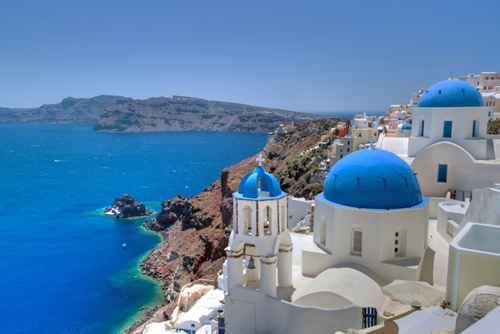
Never mind the palette for your living room – homeowners, especially those interested in green house plans, should first figure out the color of their roofs. A new study from the Lawrence Berkeley National Laboratory found that white roofs may just make for a more cost-effective and environmentally friendly house topper than the traditional black or the trendy vegetated "green" varieties. While climate change may be of primary concern for some, even those wanting to save some money should still give some thought to the roof over their heads.
The cost of cover
Berkeley lab researchers examined the three types of roofs and their life cycle cost over a 50-year period. Their conclusions were clear:
"White roofs win based on the purely economic factors we included, and black roofs should be phased out," said Arthur Rosenfield, a co-author of the paper and former Commissioner of the California Energy Commission.
According to the researchers, white roofs do a better job cooling a building and the surrounding city air than black roofs because they reflect light and heat rather than absorb it. In fact, not only were black roofs deemed economically inefficient, but also hazardous, as high summer temperatures can cause the top floors of buildings to become extremely hot.
While green roofs are similarly effective at cooling as white ones, the latter was three times more effective at countering climate change, as it purportedly kept sunlight from being absorbed into the earth's surface. Additionally, green roofs required higher installation costs than the other two kinds of roofs. Yet, the study authors also acknowledged that they did not fully investigate the benefits of the vegetation option, citing storm water management and aesthetic pleasures associated with a rooftop garden.
A grain of salt
The study seems to come down decidedly in favor of white roofs, however, Stanford research a couple of years prior indicated that reflective white actually may actually result in a net global warming due to the fact the redirected sunlight could disperse earth-cooling clouds and result in further absorption of light by pollutants. While the study did not address the potential benefit of reduced electricity bills in the summer due to a white roof, the argument could be made that those savings are lost come winter, when heat absorption may actually be a benefit.
"Cooling your house with white roofs at the expense of warming the planet is not a very desirable trade-off," said lead researcher Mark Z. Jacobson, a professor of civil and environmental engineering.
An alternative to white roofs, according to the Stanford press release, would be photovoltaic panels that generate electricity without reflecting sunlight back into the atmosphere.
Location, location, location
Conflicting research may make it hard for you to decide on your best course of action. Apart from the color, you also have plenty of materials that change the efficiency of your roofs. Additional factors such as sunlight exposure and even the pitch of the roof may influence your decision. Yet, local climate should be one of the first considerations.
White and vegetative roofs are good at keeping buildings cool, which makes them great for sunny, warm temperature climates, such as Arizona or Southern California. If you're looking at Florida house plans such as this one, you may want to consider cooling options. People in cold climates like New England, however, require heat absorption. A dark roof can even assist in snow melt in the winter months. In any case, it's always a good idea to talk to your contractor about the most cost-efficient options as well as the feasibility of implementing them.